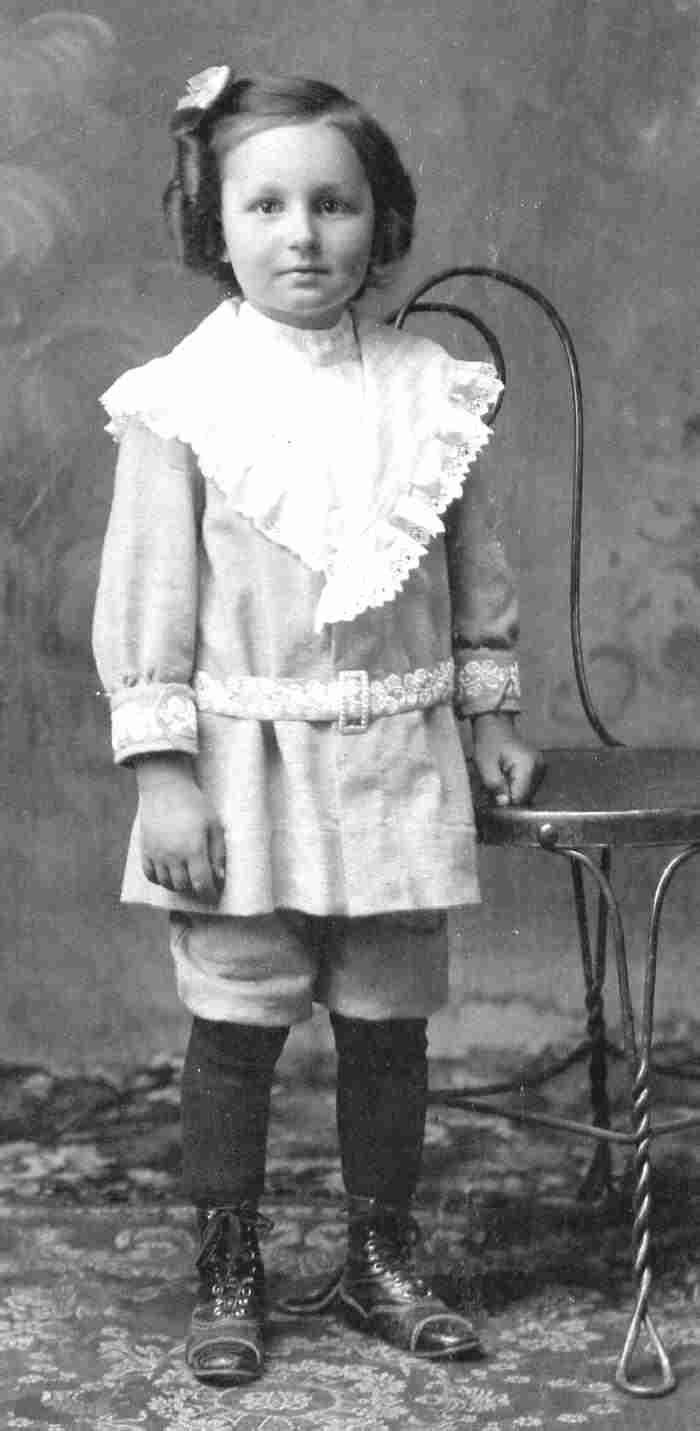
Boys Tunic Stylistic Features: Belts

Figure 1.--This American boy wears a tujnic suit. The image is undated, but we would expect the portrait was taken sometimne after the turn of the 20th century. Notice the short length. This suggests to us aometime arounf 1905-10. Earlier tunic suits were generally knee length. Notice the embroidery on the belt which matches on the sleeve cuff. Image courtesy of the RG collection.
|
|
Unlike the skeleton suit which was not belted, tunics (unlike true smocks, often were belted at the waist. Tunics in the early and mid-19th Century varied greatly. We have relatively few images of early 19th century tunics, so we can not yet fully assess the belts. The notice suits both with and without belts. We think the belted tunics were more common, but we cannot yet confirm that. Tunics in the 1870s more commonly had belts and by the 1880s they almost all came with belts. The belts on tunics were purely decorative. They had not practical purpose what so ever. We have noted them both in the same color and material as the tunic and otyhers in contrasdting colors. The belt was one of the principal stylistic features. We have not found a lot of beltless tunics. We have found a few . These examples show both tunic and pants matching and with contrrasting. We think that the beltless tunics were less common. We do not see many beltless tunics in the 20th century even though the tunic was a very common outfit for boys.
Belted Tunic Suits
Unlike the skeleton suit which was not belted, tunics (unlike true smocks), often were belted at the waist. Tunics in the early and mid-19th Century varied greatly. We have relatively few images of early 19th century tunics, so we can not yet fully assess the belts. The notice suits both with and without belts. We think the belted tunics were more common, but we cannot yet confirm that. A good example is a Swiss boy (1840). Tunics in the 1870s more commonly had belts and by the 1880s they almost all came with belts. The belts on tunics were purely decorative. They had not practical purpose what so ever. We have noted them both in the same color and material as the tunic and otyhers in contrasdting colors. Most were oplain colors, but a fe had embroidery or other decorative elements.
Belts by the late 19th Century were almost a necessary stlistic feature on all tunics. The belt was frequently quite broad. The belt was one of the principal stylistic features.
Beltless Tunic Suits
We have not found a lot of beltless tunics. We have found a few . One is a blue tunic suit worn by a Danish boy (1818). We also notice one in a French fashion catalog (1842). These examples show both tunic and pants matching and with contrrasting. We think that the beltless tunics were less common. We do not see many beltless tunics in the 20th century even though the tunic was a very common outfit for boys. I suspect that the belt was so common because a tunic without a belt looked rather like a dress.
HBC

Navigate the Historic Boys' Clothing Tunic pages:
[Return to the Main tunic page]
[Historical trends]
[Stylistic features]
[Tunic styles]
[Tunic accesories]
[ Pantalettes]
[ Stockings]
Navigate the Historic Boys' Clothing Web Site:
[Introduction]
[Activities]
[Biographies]
[Chronology]
[Cloth and textiles]
[Clothing styles]
[Countries]
[Topics]
[Bibliographies]
[Contributions]
[FAQs]
[Glossaries]
[Images]
[Links]
[Registration]
[Tools]
[Boys' Clothing Home]
Created: January 30, 1999
Last updated: 2:47 AM 11/22/2007



